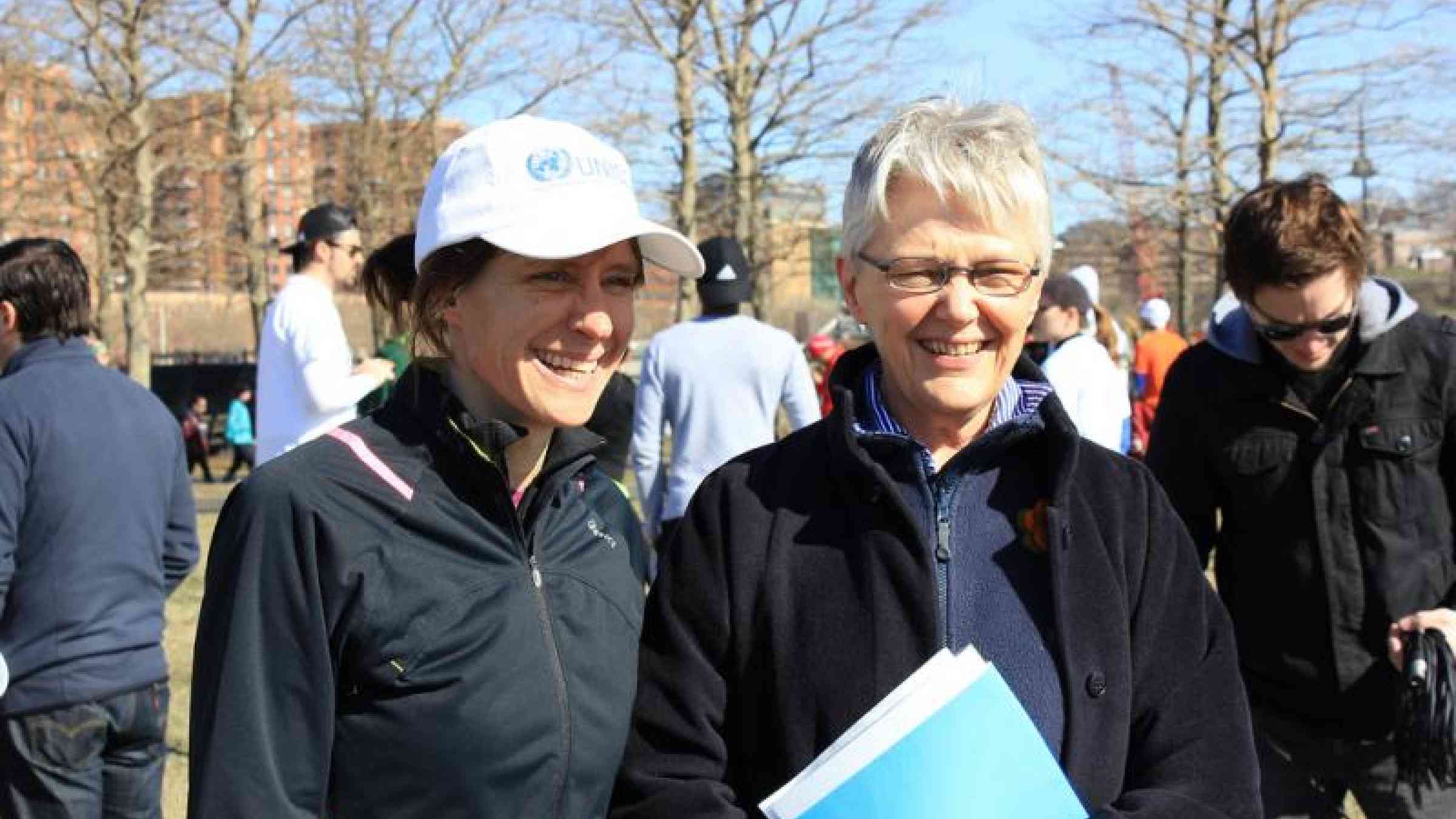Life After Sandy: Interview with Hoboken, NJ Mayor Dawn Zimmer

Mayor Dawn Zimmer of Hoboken, NJ and Margareta Wahlström. Chief of UNISDR. The City of Hoboken organized the Hoboken Resilience Run, a 5K and Fun Run for post Hurricane Sandy recovery. The run, which took place on 6 April 2013, was organized in support of UNISDR's Making Cities Resilient Campaign
Dawn Zimmer, Mayor of Hoboken, NJ (USA), is one of more than 50 Mayors from around the world who will attend the Fourth Session of the Global Platform for Disaster Risk Reduction 2013, taking place in Geneva, 19-23 May. The “Meet the Mayors” interview series aims to showcase the actions local governments participating in UNISDR's Making Cities Resilient Campaign are taking to reduce disaster risk and strengthen the resilience of their communities.
Q. Hurricane Sandy focused the world’s attention on the fact that disasters can strike anywhere and are not limited to impacting cities in low and middle-income nations. How do you think Hurricane Sandy has raised awareness of disaster risk reduction in your city and what are some of the steps you are taking as Mayor to reduce disaster risks in Hoboken?
DZ. For the first time in Hoboken history, the storm surge from Hurricane Sandy caused the Hudson River to overflow into our city, causing widespread flooding and hundreds of millions of dollars in damage. This has drastically raised awareness of the need to reduce disaster risks in our community. We are pursuing a comprehensive approach to make our community more resilient. This includes green initiatives to reduce flooding from storm-water runoff, exploring the use of floodwalls, and installing additional flood pumps. In addition, we are actively working to make our city more resilient to power outages through the use of micro-grids, permanent backup generators, and elevating and protecting our electrical substations.
Q. What are the big challenges you face as Mayor in reducing disaster risks?
DZ. Many existing federal and state policies for disaster relief and construction were designed with suburban areas in mind. Urban areas like Hoboken have unique challenges that require changes to these policies.
Q. What are you hoping to learn and achieve from the Global Platform 2013?
DZ. I hope to learn from the experiences of other communities that have faced and overcome similar challenges including urban flooding and power outages.
Q. What are the key messages you would like to give the global leaders attending the Global Platform in terms of where they should prioritize policies and investments?
DZ. In the United States, regulations regarding hazard planning and mitigation are heavily biased towards suburban areas. We need to prioritize the development of policies that address the unique needs of both urban and suburban communities.
Q. What is the one critical area you think should be included in the next international framework on disaster risk reduction which is expected to be adopted in 2015 – the successor to the current Hyogo Framework for Action?
DZ. I am interested in further exploring the idea of designing cities and preparing communities for sheltering ‘in-place’, as opposed to evacuating.
Explore further
Also featured on
Is this page useful?
Yes No Report an issue on this pageThank you. If you have 2 minutes, we would benefit from additional feedback (link opens in a new window).